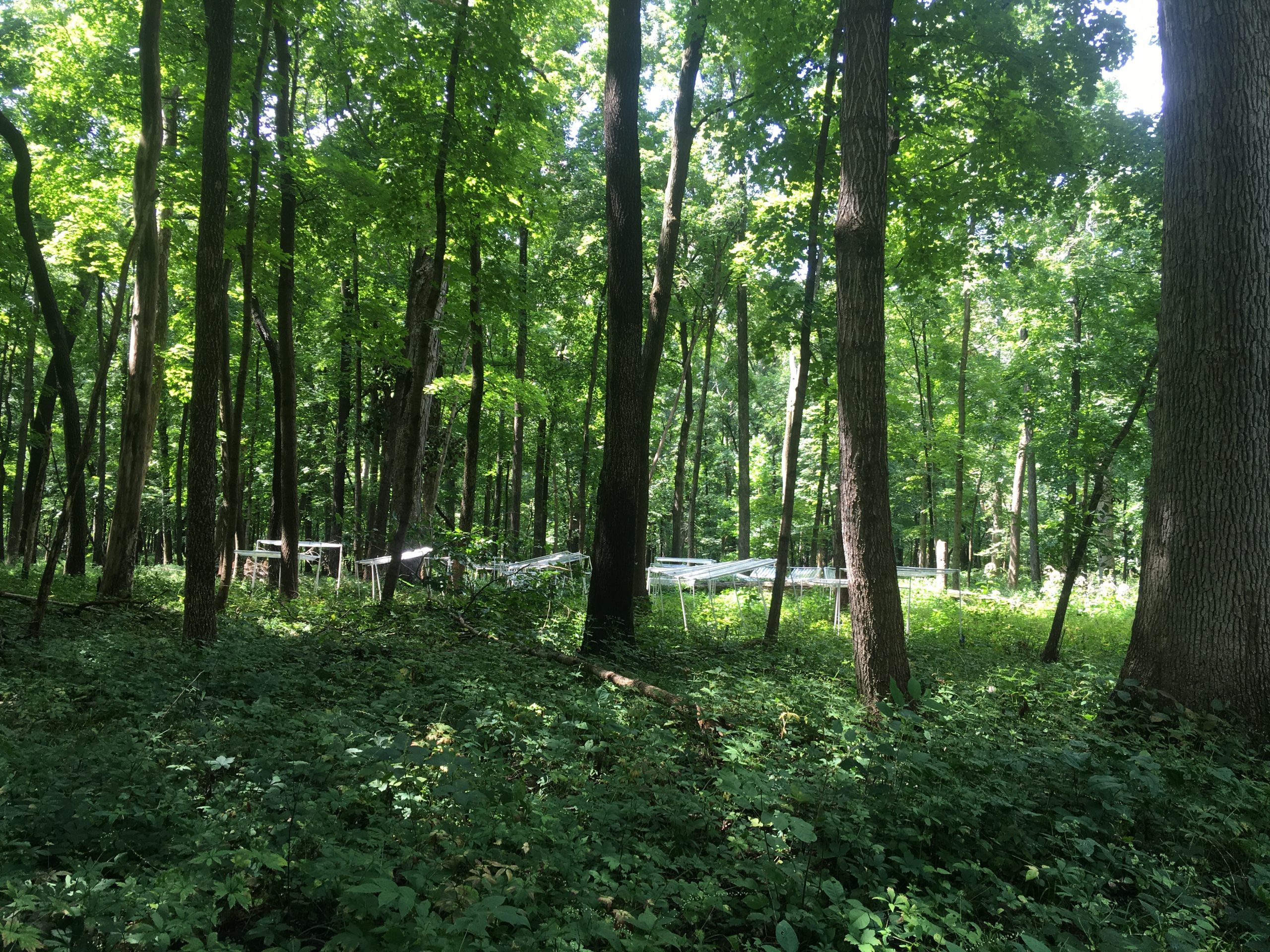
Seedlings growing under rainfall reduction or mock (ambient conditions) in our Southern site that simulates tree range contraction. The southern site is an old growth upland forest located at Allerton Park & Retreat in central Illinois.
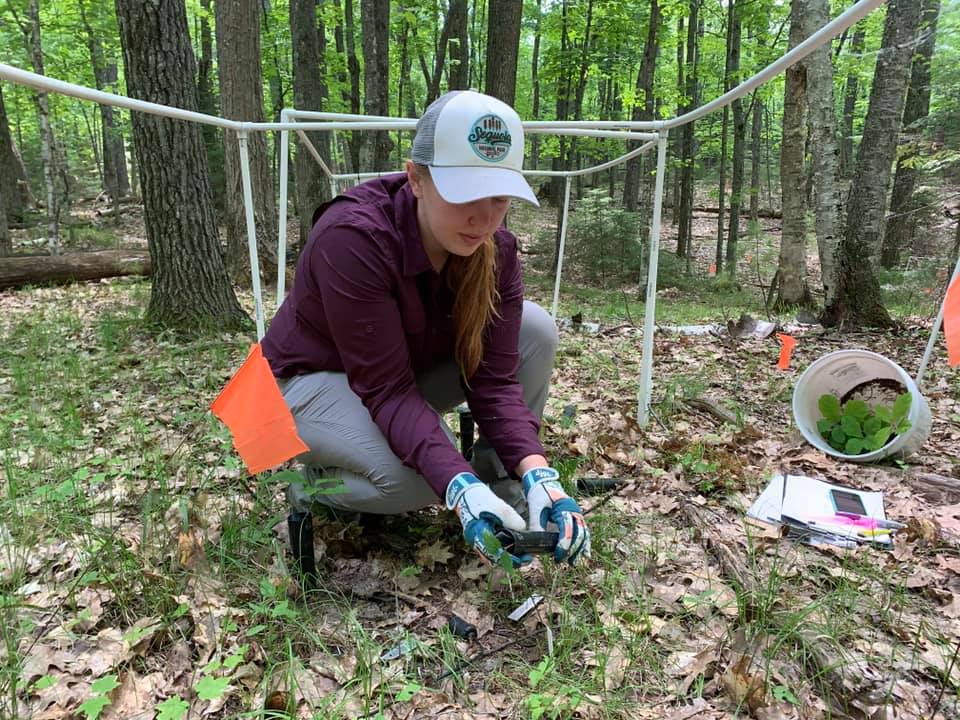
Isabelle George planting tree seedlings at our northern site that simulate tree range expansion. The northern site is an old growth forest at Kemp Station in norther Wisconsin.
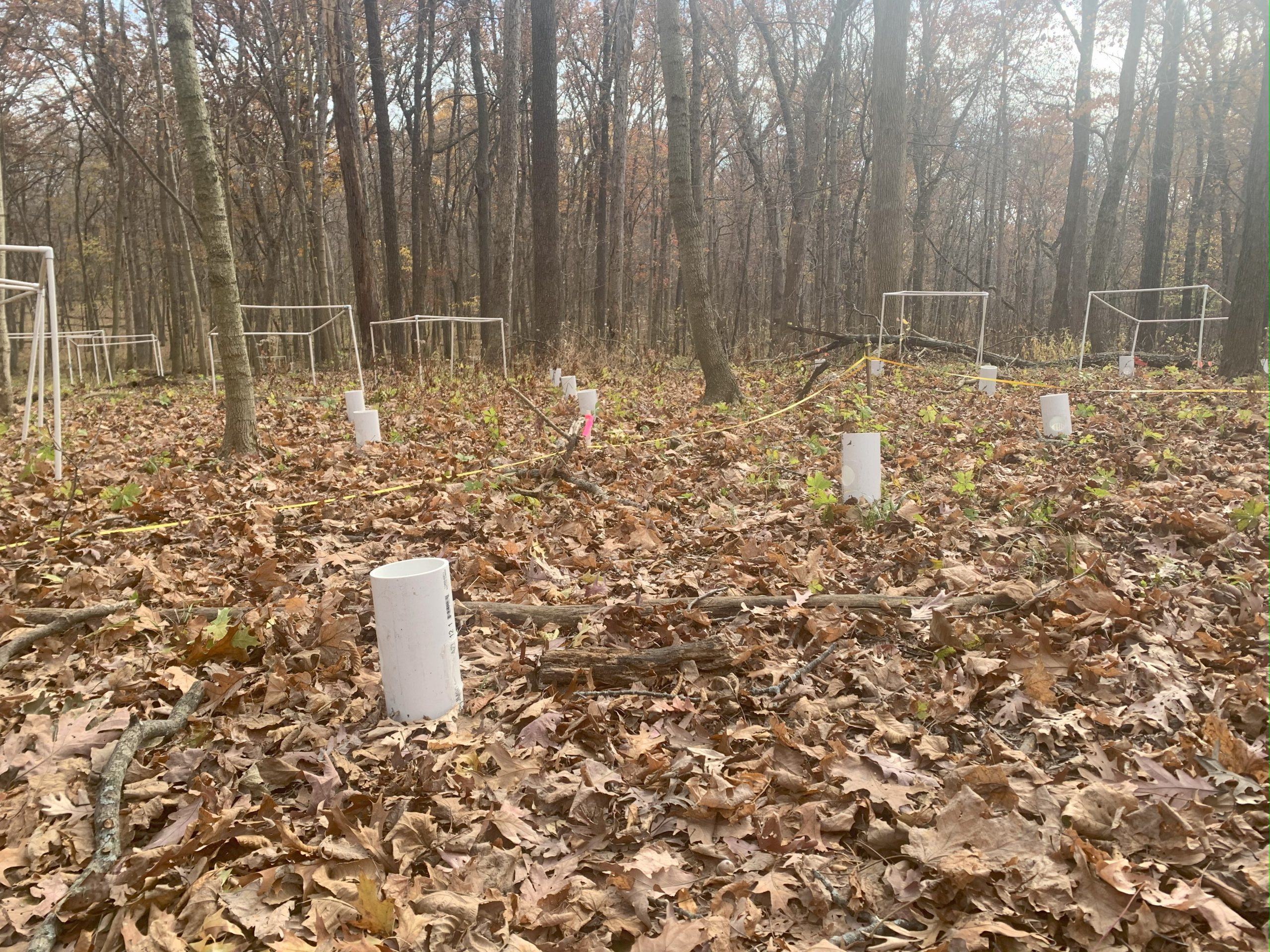
Litter PVC tubes before being driven into the soil layers in central Illinois site. Each tube was given enriched plant litter in 13C or 15N in order to trace the fate of organic matter in soils.
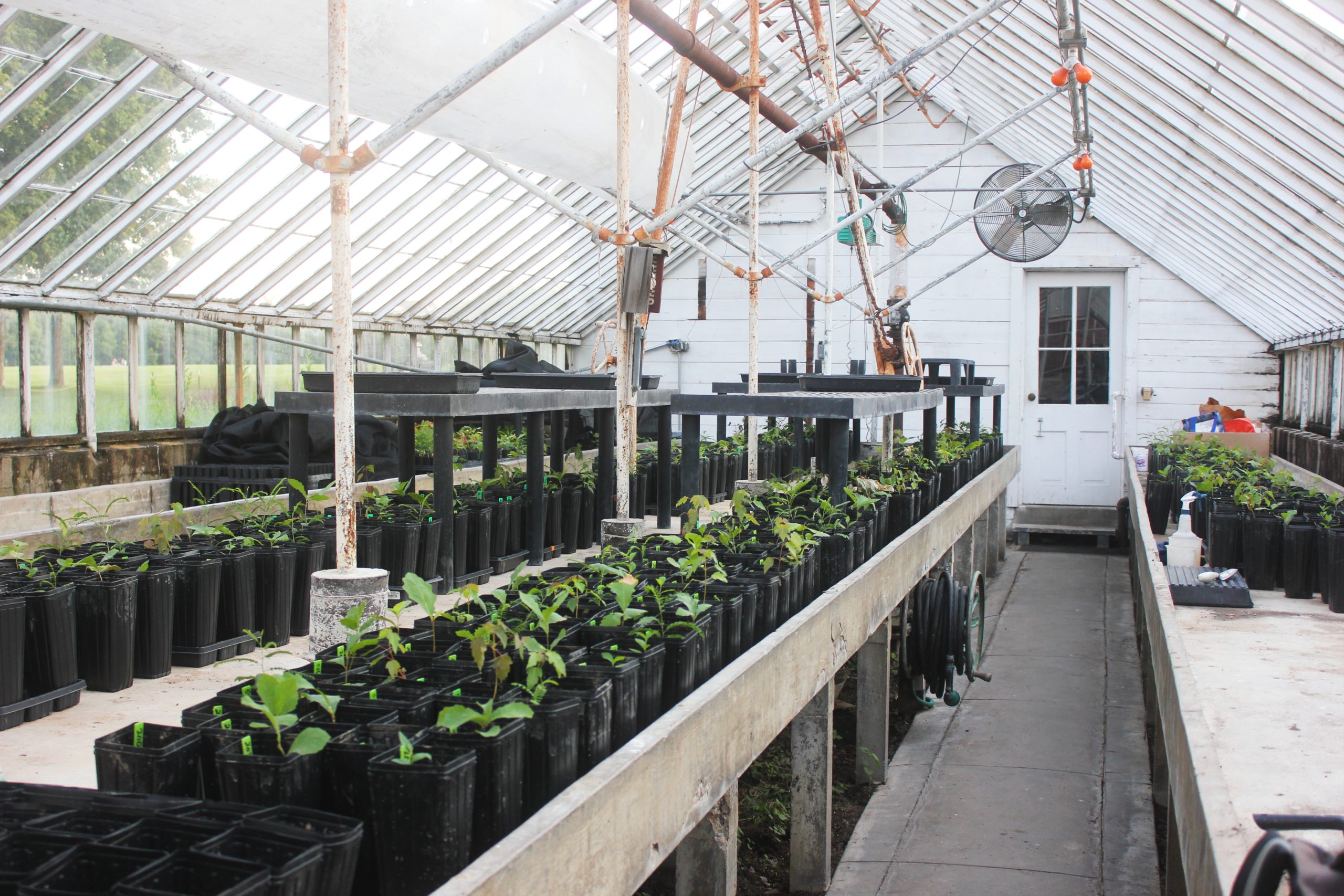
Forest trees in a Allerton’s greenhouse study testing biotic drivers of 1) soil biogeochemical properties and/or 2) microbial communities for positive mycorrhizal feedbacks.
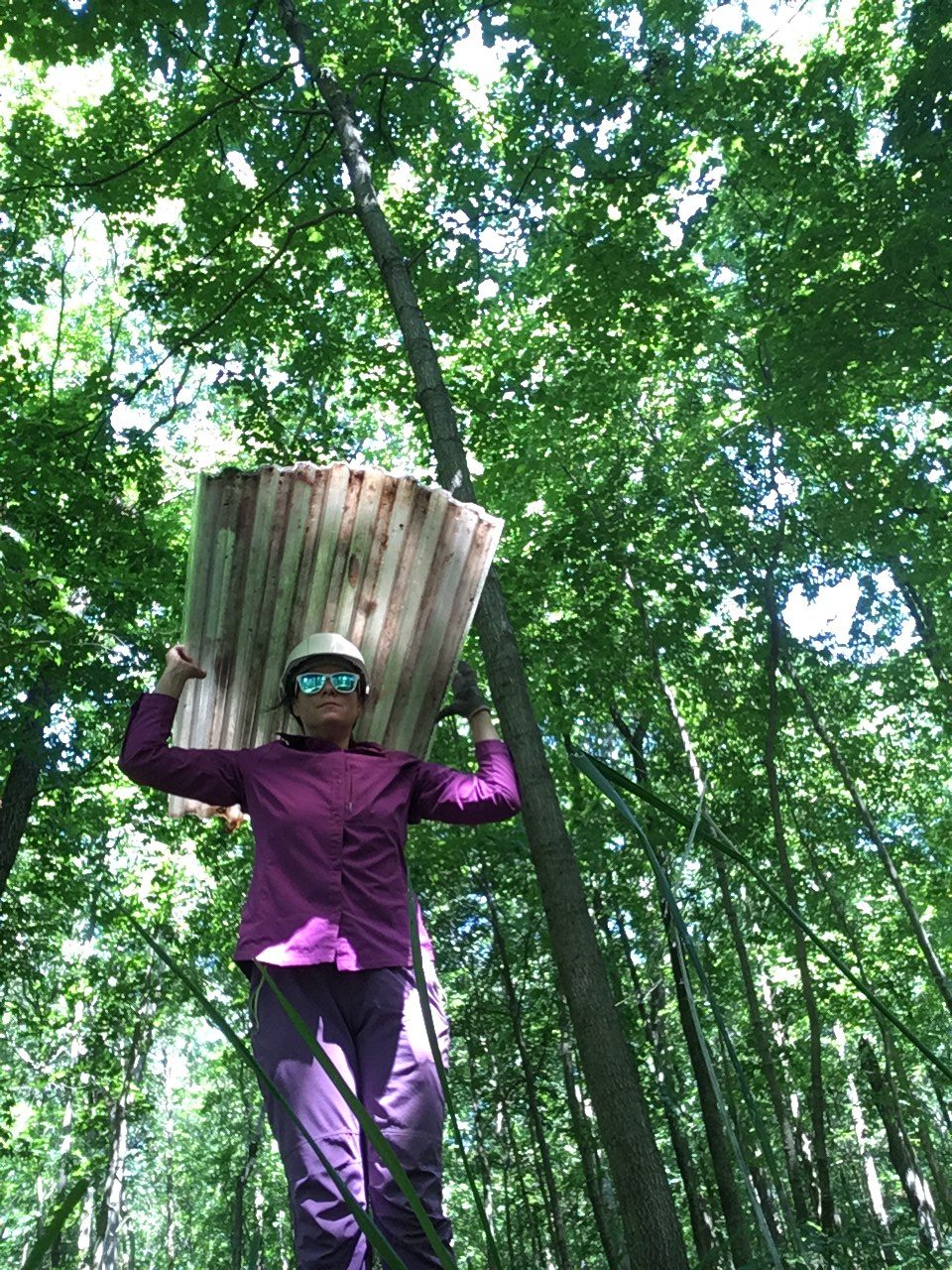
Polyvinyl carbonate sheeting used for rain out shelters
Microbial influences on forest responses to climate change
Populations forced outside their physiological tolerances by rapid climate change have been assumed to have three options: migrate to track historic climate, develop tolerance in situ through adaptation or acclimation, or go extinct. However, in complex communities an additional may be present: tolerance to novel climates may arise from shifting species interactions. For plants, microbial communities in and around roots can mediate access to soil moisture and nutrients, and alterations of these communities may provide an alternative source of phenotypic variation in plant climate tolerance
In “Shifting microbial communities can enhance tree tolerance to changing climates”, we show that tree seedlings inoculated with microbial communities sourced from drier, warmer, or colder sites displayed higher survival when faced with drought, heat, or cold stress, respectively. Microbially mediated drought tolerance was associated with increased diversity of arbuscular mycorrhizal fungi, whereas cold tolerance was associated with lower fungal richness, likely reflecting a reduced burden of nonadapted fungal taxa. Understanding microbially mediated climate tolerance may enhance our ability to predict and manage the adaptability of forest ecosystems to changing climates.
We are interested in the role of mycorrhizal fungi in determining forest response to changing climates. Temperate forest tree species tend to form one of two types of mycorrhizal symbioses, arbuscular or ecto-mycorrhizae. We encompass research in ecosystem consequences of the two alternative strategies, and the potential for positive or negative mycorrhizal feedbacks to structure deciduous forests and determine their resistance to climate changes.
To investigate whether AM/EM dichotomy influences on soil carbon storage, soil organic matter and N availability, Drs. Caitlin Hicks-Pries, Nina Wurzburger, and Richard Lankau formed a collaboration. Please visit the Hicks-Pries lab under current project with the title Testing mechanisms of how mycorrhizal associations affect forest soils to learn more. Please see, “Differences in soil organic matter between EcM- and AM- dominated forests depend on tree fungal identity” and “Mycorrhizal associations of temperate forest seedlings mediate rhizodeposition, but not soil carbon storage, under elevated nitrogen availability” for further results.
We experimentally tested if the dominance of ecto- or arbusuclar mycorrhizal tree species creates conditions more conducive seedlings with a shared mycorrhizal fungi. Positive feedbacks within mycorrhizal types may provide communities with resistance to climate change. Understanding how mycorrhizal type may determine the resilience of forest structure and function to climate change will have applied importance for forest managers.
In “Mycorrhizal driven positive feedbacks and forest resilience to reduced rainfall“, both positive mycorrhizal and negative congeneric feedbacks were observed in reduced throughfall plots. Seedlings benefited from growing in stands dominated by their own mycorrhizal type, and simultaneously, tree seedlings performed worse in the presence of adult trees of their own genus, but only in rainfall reduced conditions.
We explored two drivers: the variation in soil fungal communities and soil chemistry. We found that the composition of the ectomycorrhizal fungal communities differed between plots dominated by ecto- versus arbuscular mycorrhizal trees.
These results indicated that mycorrhizal types may create positive feedbacks in dry conditions that should be considered when predicting future states. Self-reinforcing positive mycorrhizal feedbacks may offer forest community resistance to droughts.
We expanded this research to incorporate a more controlled study of potential mechanisms to positive feedbacks on ectomycorrhizal trees. The manuscript is in preparation.
Capitalizing on “early life experiences” of tree seedlings to enhance restoration success
Tree planting is a major component of climate mitigation strategies, with commitments to plant trillions of trees in coming decades. Trees are typically planted as seedlings after growth in outdoor beds, bringing diverse microbial communities with them to planting sites. These inoculated seedlings represent a massive, unintentional movement of rhizosphere taxa across landscapes. However, they may also represent an opportunity for microbially mediated climatic tolerance if tree nurseries were managed to promote colonization by microbial symbionts adapted to specific climatic conditions. Failure of seedling establishment and poor early growth represents a key bottleneck to reforestation projects. This can be especially problematic when attempting to reforest former agricultural land, typically depauperate of healthy microbial communities.
Our current project is investigating the potential to capitalize on the geographic spread of public and private nurseries to produce tree seedlings primed to tolerate and thrive in future, challenging climates, and explore management strategies within nurseries that could improve seedling outplanting success in forests and post-agriculture sites.
To date, we have found that 1) seedlings develop unique fungal communities in their roots depending on their nursery location 2) fungal communities on transplanted tree seedlings show detectable signatures of their nursery source for at least three growing seasons post planting and 3) even when controlling for seed source, nursery of origin influenced growth and survival of transplanted seedlings.

Experimental design for experiment. Experiment proceeded in two phases- during one year of nursery growth an then two years of growth after outplanting in four locations (2 in Wi and 2 in Il)
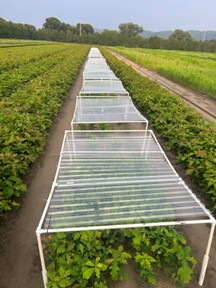
Quercus alba seeds growing under rainfall reduction or mock (ambient conditions) in a fumigated plot at Wilson State Forest Nursery in Boscobel, Wi in phase 1.
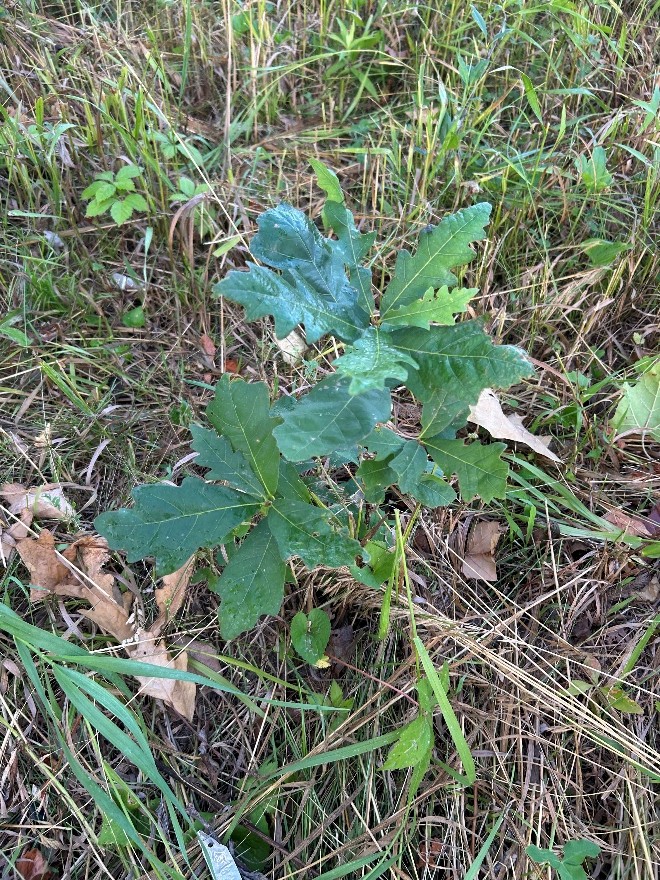
Quercus alba seedling transplanted from Wilson State Forest Nursery in phase 1 to a post-agriculture plot at 4-H Memorial Camp outside of Monticello, Illinois.
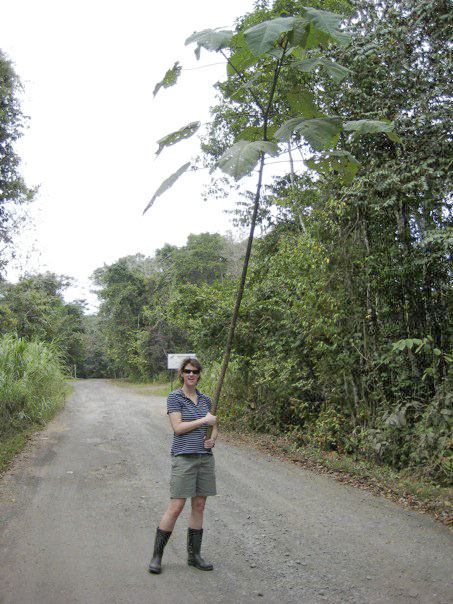
Dr. Katherine McCulloh
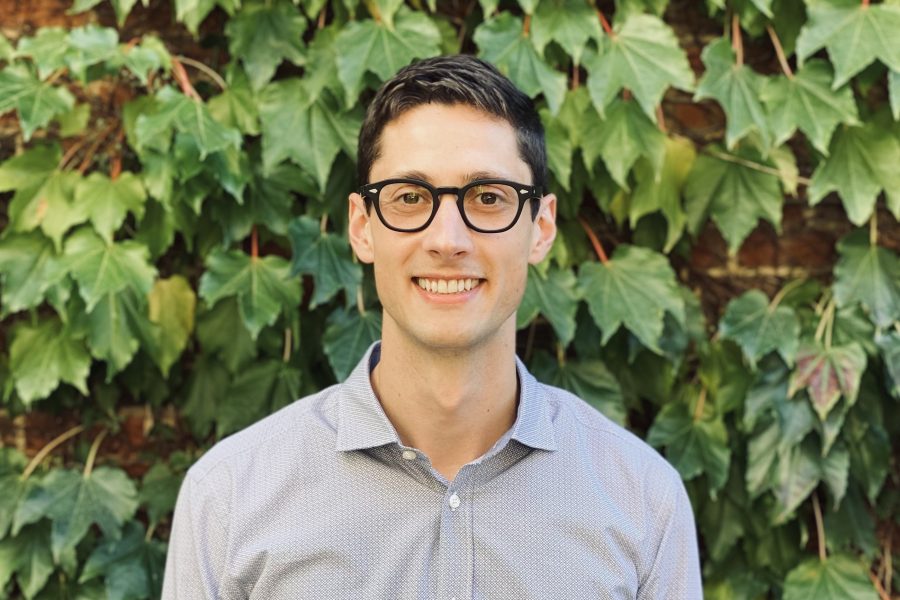
Dr. Al Kovaleski

Future research
Prior results indicate that tree seedlings inoculated with microbial communities sources from dry, hot, or cold locations improved seedling survival under those respective stresses. To understand the physiological, morphological, or transcriptional mechanisms behind these these effects, we have teamed up with Drs. Katherine McCulloh and Alisson Kovaleski. This project will inform use-inspired applications in forest restoration and tree nursery practices that support colonization of tolerance enhancing microbes. (Jan. 2026)
In collaborations with the Savanna Institute, we will explore the development of soil ecosystems after agricultural legacies and investigate practices that can promote healthy development. This research will evaluate soil community and ecosystem function development in ongoing restoration and agroforestry projects. Additionally, contribute to the development of tree nursery practices that enhance seedling establishment in both mature forest and post-agriculture land.
Recent Publications
Allsup, C. Thompson, K., George, I., Li, R. Fisher, S., & Lankau, R. (2025). Tree-fungal interactions across climate gradients: What is the potential for tree niche expansion via varying fungal associations? Journal of Ecology (TBA) https://doi.org/10.1111/1365-2745.70109
Fitch, A., Goldsmith, S., Lankau, R., (2024).Mycorrhizal associations of temperate forest seedlings mediate rhizodeposition, but not soil carbon storage, under elevated nitrogen availability. Global Change Biology 30, e17446. https://doi.org/10.1111/gcb.17446
Potter, T., Zalewski, Z., Miao, M. Allsup, C., Thompson, K., Hayden, D., George, I., Lankau, R., & Lankau, E. (2024). Applying causal reasoning to investigate multicausality in microbial systems. Ecosphere, 15, e4782. https://doi.org/10.1002/ecs2.4782
Allsup, C., George, I., & Lankau, R. (2023). Shifting microbial communities can enhance tree tolerance to changing climates. Science 380, 835-840. https://doi.org/10.1126/science.adf2027
Allsup, C., Marquardt, S., & Lankau, R. (2023). Mycorrhizal driven positive feedbacks and forest resilience to reduced rainfall. Fungal Ecology, 65, 101280 https://doi.org/10.1016/j.funeco.2023.101280
Hicks Pries, C., Lankau, R., Ingham, G., Legge, E., Krol, O., Forrester, J., Fitch, A., & Wurzburger, N. (2022). Differences in soil organic matter between EcM- and AM-dominated forests depend on tree and fungal identity. Ecology 104, e3929. https://doi.org/10.1002/ecy.3929
Allsup, C., Lankau, R., & Paige, K., (2022). Herbivory and soil water availability induce changes in arbuscular mycorrhizal fungal abundance and composition. Microbial Ecology 84, 141-152. https://doi.org/10.1007/s00248-021-01835-3
